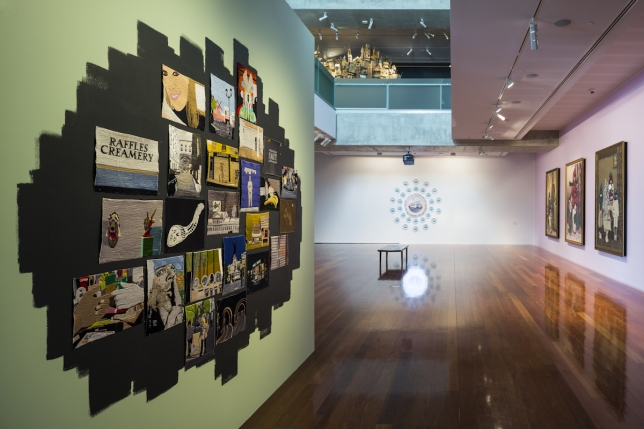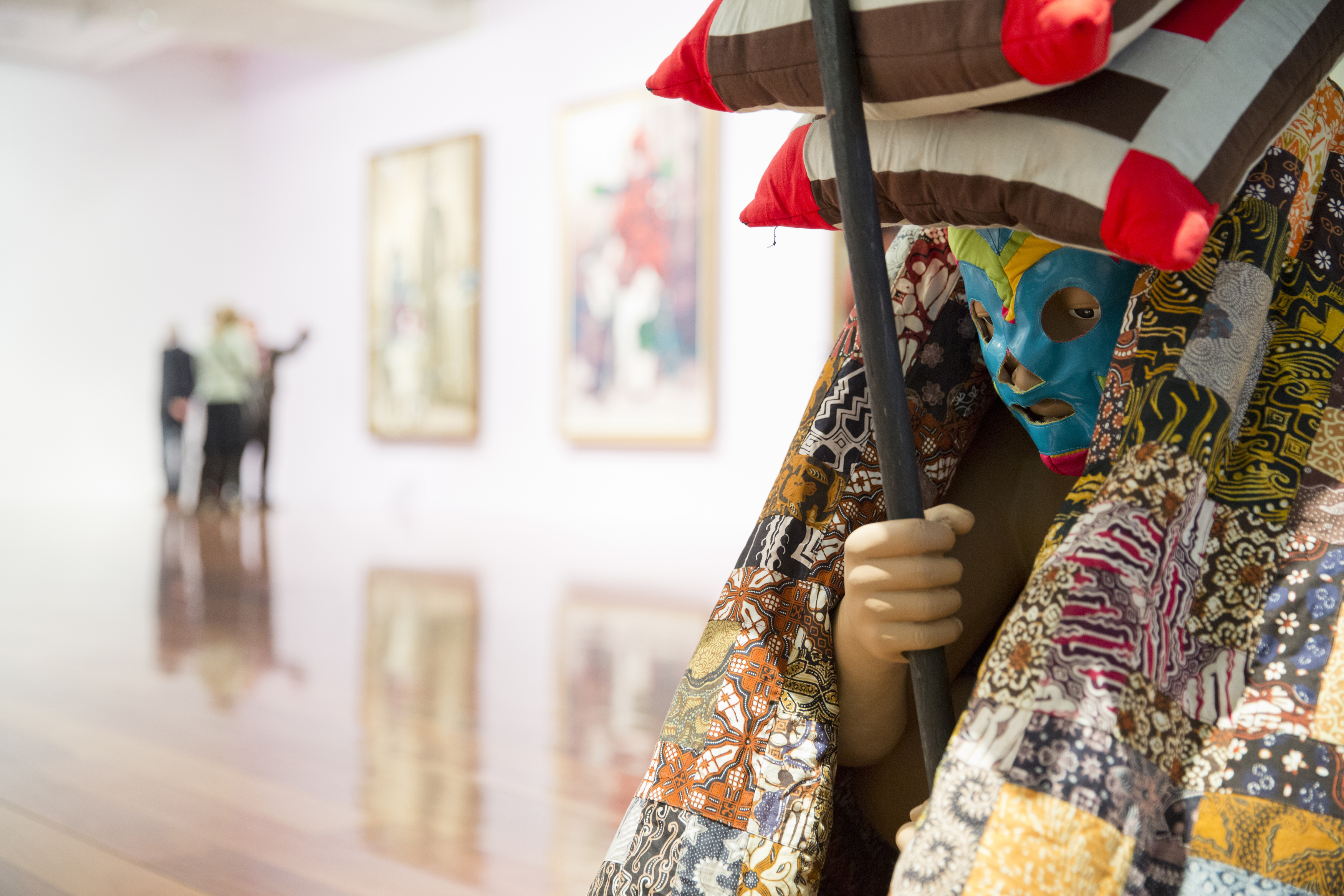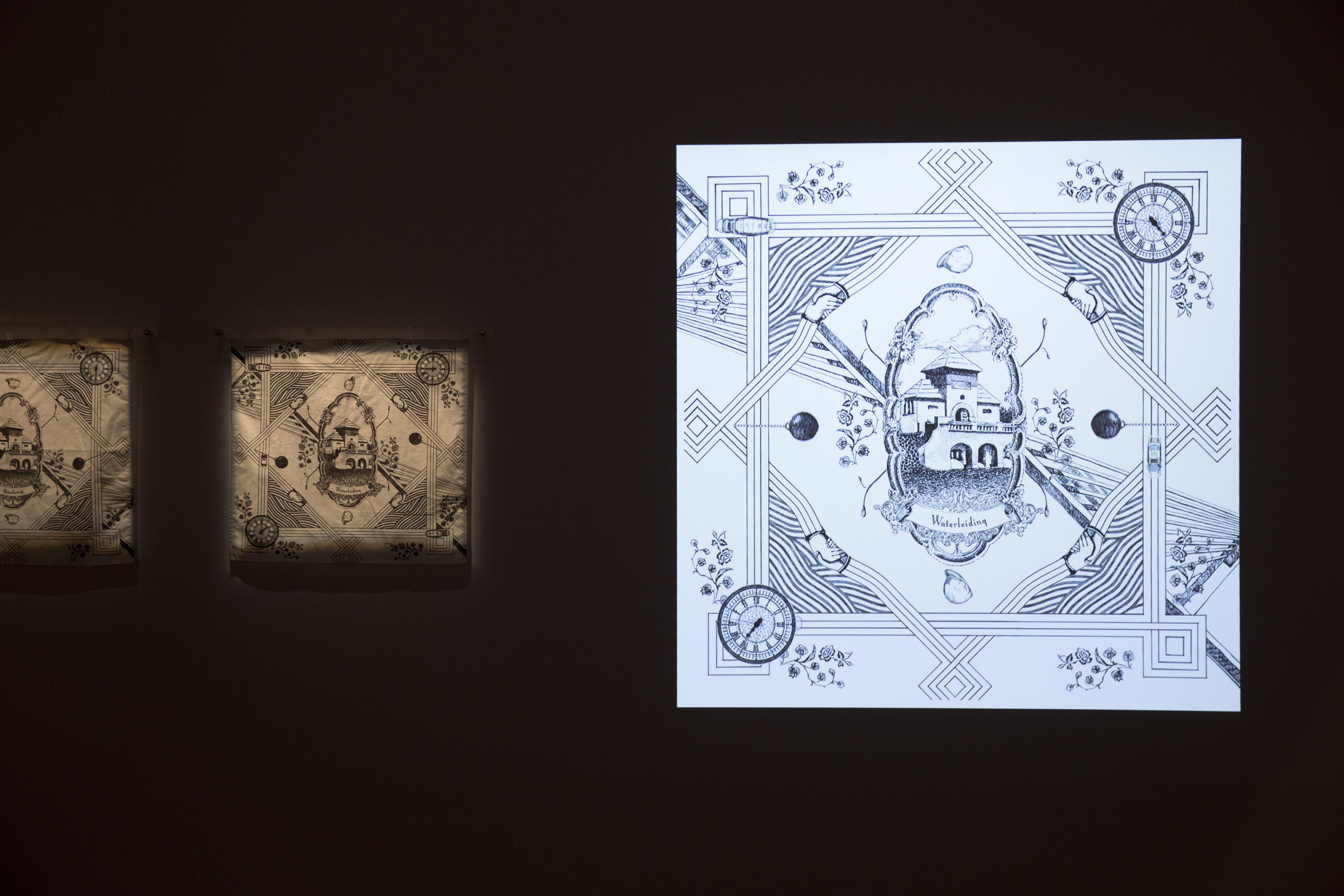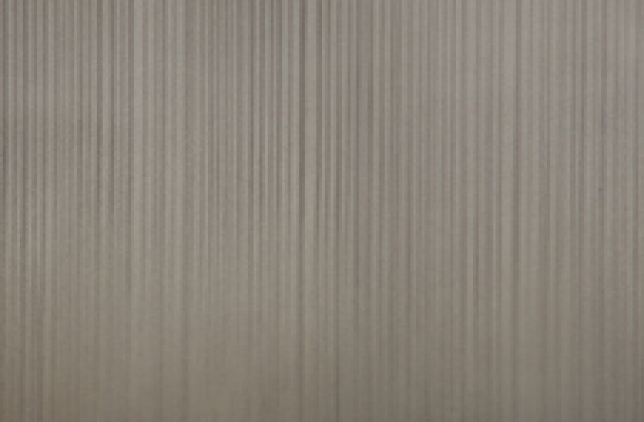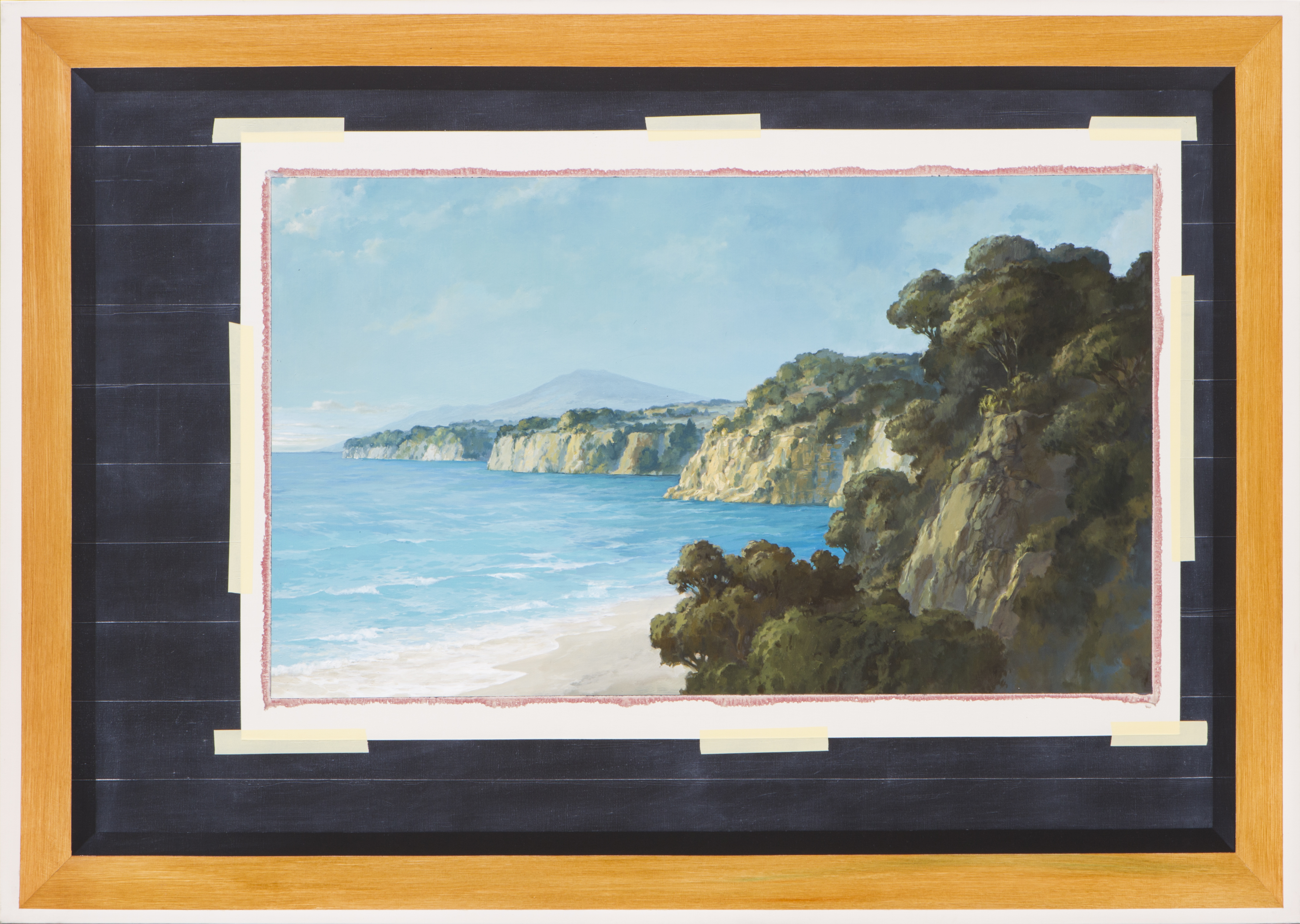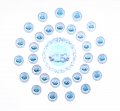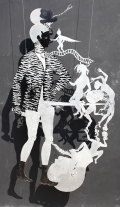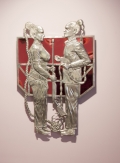"MOOI INDIE – BEAUTIFUL INDIES"
Indonesian Art Now
Group exhibition at Gordon & Susan Samstag Museum of Art, Adelaide, South Australia
Curated by Matthias Arndt
August 01 – October 03, 2014
Opening reception | Thursday | July 31, 2014 | 5-7 pm
Please click here to view the list of artworks
Please click here to view the exhibition brochure
"MOOI INDIE – Beautiful Indies" features work by Jumaldi Alfi, Eko Nugroho, Wedhar Riyadi, Arin Dwihartanto Sunaryo, Tromorama, and Entang Wiharso.
“We use Western technique. We use oil and acrylic, but still you can feel it is not Western. It is not Western because when we start working, we don’t use our brain first. We use our feelings, it’s about feeling. If we are inspired, we work. If not, we stop.”
(From Jumaldi Alfi in the art, style and Jogja Interview, 2009)
Curatorial statement by Matthias Arndt
Reading these words by contemporary Indonesian artist Jumaldi Alfi (1972) illustrates the importance of presenting Southeast-Asian art to respond to a Western domination on our culture. The exhibition Mooi Indie – Beautiful Indies features five contemporary artists and artworks by the collective Tromarama (founded 2004). It is the first presentation in Australia, showing a larger selection of the foremost important Indonesian contemporary artists.
When it comes to the East Asia, modern art discussions are primary interested in archeology and anthropology, therefore, it is our principle duty to enlarge the common scientific interest of these two fields. We have to emphasize contemporary Indonesian art with its political messages, deeply enrooted meanings, and most important, with its historical development.
The generation of artists that came to maturity during the period of upheaval and reform that occurred in the wake of the 1997 Asian financial crisis, the subsequent fall of the Suharto regime and the transition of democracy in Indonesia, take part in the international art discourse. In doing so, they built their own cultural heritage, using traditional media like batik, reliefs, textiles and embroidery, whilst they formulate a universal readable contemporary language in Indonesian art.
Mooi Indie, the Dutch term for Beautiful Indies, was originally the title of eleven reproductions of the watercolor paintings by the Dutch artist Fredericus Jacobus van Rossum du Chattel (1856-1917), showing merely harmonious scenes of East Indies.
Since the Dutch ships arrived in the late sixteenth century to control the Indonesian archipelago, until the declaration of independence in 1945, the local art scene had to overcome aggravated circumstances. After Sindu Sudjojono (1913-1986, the speaker of Indonesian visual arts before and during independence) derided and degraded the painters, who only depict pretty and beautiful things about Indies, the term Mooi Indie became famous. Today the Dutch expression is identified with the genre painting, which captures romantic depictions of the Indies, landscape scenes, showing volcanoes, mountains, river valleys and villages immerging in golden sunshine. Today they are amongst the most expensive artworks in auction, representing Indonesian modernism. As a matter of fact you could also see this Mooi Indie movement as a ”cultural colonization“ of Indonesia. Even the art history has been partly written by the colonizers.
Whilst most Mooi Indie painters were Dutch colonialists in the 1930s and 40s, the local art scene changed dramatically. In search of identity, the formal art education of Indonesian art developed during the `50s. Two decades later the importance and gravity to restore one self’s culture led modern Indonesian artists to the trend to explore primitive and traditional art. A diversity of creations and an increase of activity followed. The downfall of the Suharto government in 1998, gave contemporary artists the opportunity to express a new dynamic Asian modernism. As a result, the number of artists, art collectors and galleries rose simultaneously. If we observe the journey of Indonesian art from the colonial era to its present development, we can conclude that modern Indonesian art is a reflection of the struggle of local artists to achieve freedom, not only from colonialism, but also from Western domination.
The Mooi Indie – Beautiful Indies show presents five different contemporary artists and artworks by the collective Tromarama. Although each of the presenting artists has an individual point of view, they all combine in their passion for modern Indonesian art and culture.
Jumaldi Alfi for instance is in his important series „Melting Memories – Rereading Landscape Mooi Indie” approaching the earliest modernist movements. With his subtle conceptual approach of critical „Rereading Mooi Indie“ Jumaldi Alfi, representative of the new generation of Indonesian artists rewrites the art history in favor of the Indonesian contemporary art, by claiming this part of Indonesian art history and culture back. Using a new approach he re-appropriates the Mooi Indie movement, by adding new masterpieces to the existing Mooi Indie works. For example, he does drawings and sketches of major existing works and paints from some early Mooi Indie masters. With that he claims and rewrites this part of Indonesian modernism into a contemporary chapter of conceptual Indonesian contemporary art. His series concludes as the perfect appellation for the exhibition Mooi Indie – Beautiful Indies.
Besides Jumaldi Alfi, further Indonesian contemporary artists are presenting artworks with a global and historical impact. Eko Nugroho (1977), socio-political Indonesian artist, presents his sculpture “Under Pillow Ideology” and one of 24 embroideries from his “La Rue Parle” series, which he began while staying in Paris. Much to his surprise he found out that the so-called First World has similar issues as the so-called Emerging Countries. Although, the central topic of his work has been modern life in urban areas, he is deeply engaged with the culture of his time. As a symbolic part of his artwork Nugroho uses masks which are an element of the traditional culture in Java. They give his portraits anonymity and him connect him to his own heritage.
The artist Wedhar Riyadi (1980) explores mostly the psychological depths of pop cultural imagery. He’s creating strange, rather macabre fantasy worlds populated by figures that are at once playful and disturbing. Riyadi is a master of line drawing, and his works show a powerful inspiration from contemporary street art, graffiti and comics. Whereas Riyadi explores themes of consumerism, politics and cultural identity, violence is a recurring element in his works. At the same time he tells personal stories about his idols, hobbies or peers. His artwork on display, “Keributan Dari Negara Subur”, shows two styles simultaneously, realism and fantasy, by exquisitely rendering found historical photographs of a man posing in Western Style, and then irreverently overlaying them with his trademark cartoon violence. To him “the juxtaposition of these styles symbolizes traditional versus modern, local versus global and public versus private.”
(From the Interview The Juxtaposition of Indonesia the Modern and Traditional: A Chat with Wedhar Riyadi, by SIXTWO)
Furthermore Arin Dwrihartanto Sunaryo (1978) displays two new volcanic ash diptyches’. Sunaryo is famous for his rejection of a paintbrush in favor for direct application with his hands. He mostly experiments with pigmented resin and ash. In its natural form both elements connect with age old methods of preservation. His paintings capture shifts between solid and liquid, static and animated, synthetic and natural and are rooted in the embrace of chance.
Being one of Indonesia’s most provocative artists, Entang Wiharso (1967) his paintings and installations combine personal, Western and Indonesian mythologies. To him art is a way to understand the human condition, to perceive, feel and comprehend human problems, like love, hate, fanaticism and ideology. Notwithstanding, he casts a critical eye on international politics, environmental issues and cultural stereotypes. Recently, an increasing use of written text has entered is work. Wiharso puts together primitivism with a cartoon’s language of his contemporary life, being able to transport primitivism in his actual reality.
The artist collective Tromarama (2004) was formed by Febie Babyrose, Ruddy Hatumena and Herbert Hans. Tromarama is interested in contemporary urban culture and they have chosen stop-motion animation as their principal medium of expression, as this allows them to imagine how daily objects might move as if they were alive. As cheerful as their work seems, they often have a critical undertone. They do not overly focus on artifice, they simply uses art as an uninhibited avenue for experimentation.
The activities of the Indonesian art market today has served as a motor that carries Indonesian works of art forward and brings them into global distribution. Contemporary Indonesian Art is one of the most current, vital and exciting art scenes in Southeast Asia. Mooi Indie – Beautiful Indies is an exhibition to celebrate the diverse, culturally aware, and socially engaged art that is the product of the energetic art scene that thrives in the cities of Australia’s nearest neighbor: Indonesia.
PRESS
Blouin ArtInfo | July 2014 | Samstag Museum’s “Mooi Indie” Celebrates Contemporary Indonesian Art
John McDonald | August 2014 | Mooi Indie
ART Almanac | September 2014 | Mooi Indie - Beautiful Indies - Indonesian Art Now
Sydney Morning Herald | August 2014 | Mooi Indie and a new wave if Indonasian art hits our shores
The Adelaide Review |September 2014 | Mooi Indie
